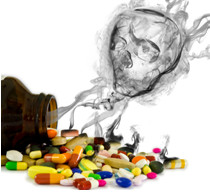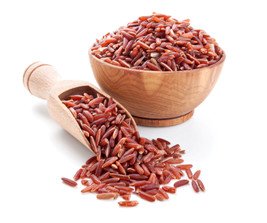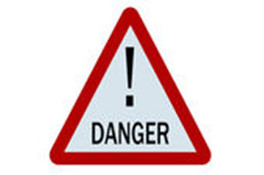Is Natural Always Better?
Author: Dr. Stephen Chaney
 Is red yeast rice safe? First, let’s take a quick look at statins.
Is red yeast rice safe? First, let’s take a quick look at statins.
Statin drugs save lives. When taken by people who have survived a heart attack, they have proven effectiveness at lowering the risk of a second heart attack.
But, statins are also dangerous. They can cause muscle damage, liver damage, and even kidney failure (statin side effects ). Statins can also cause diabetes and memory loss.
Because of these side effects, many people are looking for more natural alternatives for lowering their cholesterol. Many other people are unable to take the statin drugs because of muscle pain and/or elevated liver enzymes.
One popular alternative to statin drugs is red yeast rice. Red yeast rice comes from traditional Chinese medicine, so it is natural. However, just because a supplement is natural doesn’t necessarily mean that it is either safe or effective. Red yeast rice is a perfect example. Many people think that red yeast rice is as effective as statins for reducing cholesterol levels. They believe red yeast rice side effects are non‐existent. Nothing could be further from the truth!
Is Red Yeast Rice Safe and Effective?
Is Red Yeast Rice Effective?
 Is red yeast rice safe and effective. The active ingredients in red yeast rice are a class of compounds called monacolins, which are close analogs of the statin drugs. In fact, the most abundant monacolin in red yeast rice, monacolin K, is identical to the statin drug lovastatin (Mevacor). That destroys one myth. If a red yeast rice product contains as much monacolin K as a lovastatin pill, it would have the same benefits and the same side effects.
Is red yeast rice safe and effective. The active ingredients in red yeast rice are a class of compounds called monacolins, which are close analogs of the statin drugs. In fact, the most abundant monacolin in red yeast rice, monacolin K, is identical to the statin drug lovastatin (Mevacor). That destroys one myth. If a red yeast rice product contains as much monacolin K as a lovastatin pill, it would have the same benefits and the same side effects.
It only gets worse! In fact, you have no way of knowing how much monacolin K is in your red yeast rice supplement. Because lovastatin is a drug, the manufacturers of red yeast rice are caught in a Catch‐22 situation. If the manufacturers were to actually standardize or disclose the levels of monacolin K in their product, the FDA would consider it an unapproved drug and remove it from the market.
When manufacturers don’t standardize their active ingredients, bad things happen.
How bad, you might ask? A recent study (RY Gordon, Archives of Internal Medicine, 170: 1722‐1727, 2010) analyzed the concentration of active ingredients in 12 commercially available red yeast rice supplements. The results were appalling:
- Total monacolins in the supplements ranged from 0.31 to 11.15 mg/capsule.
- Monacolin K (lovastatin) ranged from 0.10 to 10.09 mg/capsule.
To put that into perspective, therapeutic doses of lovastatin range from 10 to 80mg/day. Most of the red yeast rice supplements had an insignificant amount of monacolin K. Only a few of the samples tested had enough monacolin K to be equivalent to the lowest therapeutic dose of lovastatin.
Is Red Yeast Rice Safe?
 Another study (Mazzanti et al, British Journal of Clinical Pharmacology, DOI:10.1111/bcp.13171) found that red yeast rice with 5-7 mg of monacolin K had the same frequency of side effects as 20-40 mg of pure, pharmaceutical grade lovastatin. The most frequent side effects were muscle pain, muscle damage, liver injury, gastrointestinal reactions, and skin reactions. Hospitalization was required in 25% of the cases.
Another study (Mazzanti et al, British Journal of Clinical Pharmacology, DOI:10.1111/bcp.13171) found that red yeast rice with 5-7 mg of monacolin K had the same frequency of side effects as 20-40 mg of pure, pharmaceutical grade lovastatin. The most frequent side effects were muscle pain, muscle damage, liver injury, gastrointestinal reactions, and skin reactions. Hospitalization was required in 25% of the cases.
It gets even worse! The first study (RY Gordon, Archives of Internal Medicine, 170: 1722‐1727, 2010) also measured levels of a toxin called citrinin that is produced by a fungus that grows on red yeast rice. Citrinin is potentially toxic to the kidneys. This is not a toxin that you would find in a pharmaceutical product like lovastatin, but it was present at high levels in one third of the red yeast rice formulations tested.
What Does This Mean For You?
Is red yeast rice safe? To sum it all up, if you were to go out and purchase a red yeast rice supplement.
- You might get a batch with no active ingredients. It wouldn’t have any of the side effects of a statin drug, but it wouldn’t have any efficacy either.
- You might get a batch that would have the same efficacy and the same side effects as a low dose statin drug.
- You would have a 33% chance of getting a batch that was contaminated with a toxin that you would never find in a statin drug—one that might damage your kidneys.
I don’t know about you, but after reading those studies I have no desire to ever try a red yeast rice supplement.
If you are looking for a natural cholesterol-lowering supplement that is both safe, effective, and recommended by the National Institutes of Health, choose one containing 2 grams of plant stanols and sterols.
Is red yeast rice safe? Not always.
The Bottom Line
Just because a supplement is natural doesn’t necessarily mean that it is either safe or effective. Red yeast rice is a perfect example. Many people think that red yeast rice is as effective as statins for reducing cholesterol levels. They believe red yeast rice side effects are non‐existent. Nothing could be further from the truth!
- The active ingredients in red yeast rice are a class of compounds called monacolins, which are close analogs of the statin drugs. In fact, the most abundant monacolin, monacolin K, is identical to the statin drug lovastatin (Mevacor).
- There is no standardization of red yeast rice supplements. One study looked at 12 red yeast rice supplements and found that the dose of monacolin K ranged from almost nothing to the equivalent of the lowest therapeutic dose of lovastatin.
- Another study found that the side effects of red yeast rice were identical in type and frequency to low dose lovastatin.
- Even worse, one third of the red yeast rice supplements tested contained a toxin called citrinin that is potentially toxic to the kidneys.
- To sum it all up, if you were to go out and purchase a red yeast rice supplement,
- You might get a batch with no active ingredients. It wouldn’t have any of the side effects of a statin drug, but it wouldn’t have any efficacy either.
- You might get a batch that would have the same efficacy and the same side effects as a low dose statin drug.
- You would have a 33% chance of getting a batch that was contaminated with a toxin that you would never find in a statin drug—one that might damage your kidneys.
Natural isn’t always better! I don’t know about you, but after reading those studies I have no desire to ever try a red yeast rice supplement.
If you are looking for a natural cholesterol-lowering supplement that is both safe, effective, and recommended by the National Institutes of Health, choose one containing 2 grams of plant stanols and sterols.
These statements have not been evaluated by the Food and Drug Administration. This information is not intended to diagnose, treat, cure or prevent any disease.
